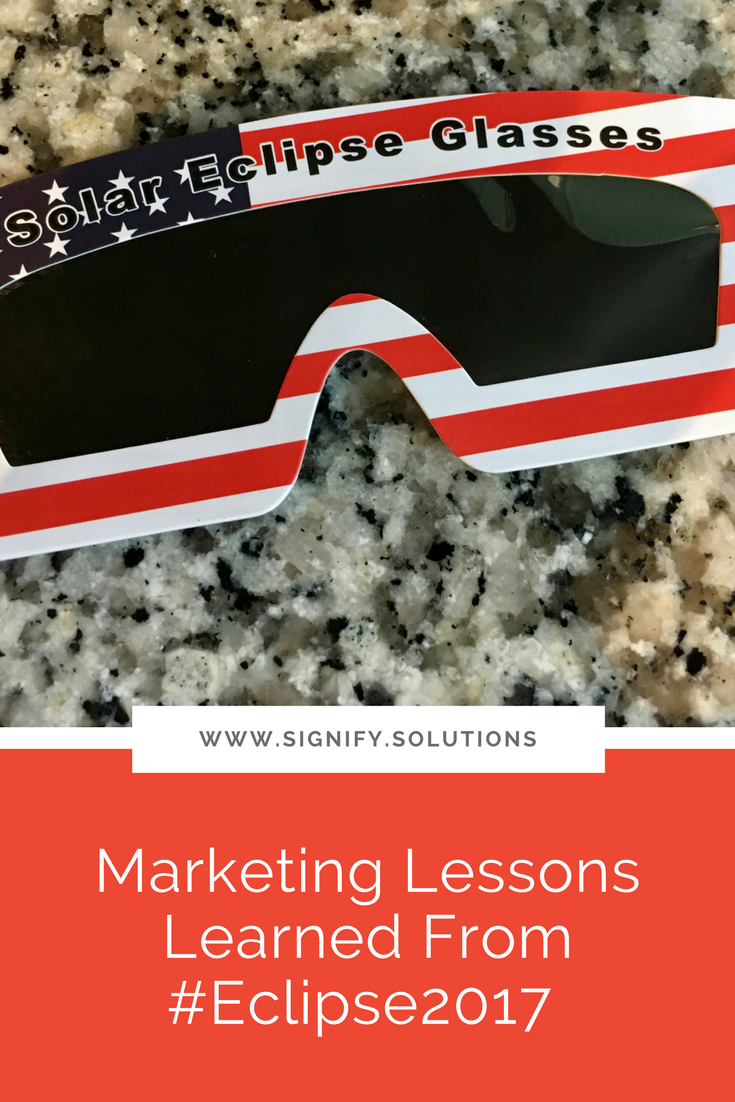Consumers and donors today have the world at their fingertips. They’re able to conduct their own research on organizations and products, and are faced with a wide variety of options to choose from. If you want to stand out from the crowd—and attract your ideal donors and customers—you need to have a deep understanding of your audience, their behavior, and why they make the decisions they do.
Basically, you need to have a good grasp of why they would choose to support you rather than another nonprofit or social enterprise.
But how?
Two words! Market research.
You may have heard this term thrown around before, but what is it really? Market research is a way of gathering information to better understand your target audience and what they want. Using a few proven techniques, you can gain valuable insight into your audience and get direct feedback from them about their interest in your organization.
No more guessing or assuming!
When done intentionally, market research can help you gain more support for your cause, reach a bigger audience, improve the experience of your current customers or donors, and build a stronger overall marketing strategy for your nonprofit or social impact company.
So, let’s get into the nitty gritty of how to understand what your customers and donors really think so you can reach more people for your cause!
When To Use Market Research
You know you could probably benefit from learning more about what your donors and customers want. Who couldn’t? But where do you start? When is the right time for it?
Maybe you’re thinking about launching a new product or service and you’re not sure how much support it would actually receive. Or, maybe you want to pivot and take your organization in a new direction, like if you’re a nonprofit wanting to start selling products or build a social enterprise. Knowing more about your audience will help you create services and products that people actually want.
Market research is also beneficial when you already have a product or service that’s not performing as well as you’d like, or your sales or donations have decreased lately. That’s a perfect time to reevaluate or troubleshoot your strategy.
Expanding your client or donor base is important, too! But you need to know as much as you can about them in order to successfully grow.
Market research is also just a great way to check in with your audience regularly. People change, and so do their priorities. This can help ensure that you’re still providing what they’re looking for.
To illustrate some of the ideas above, let’s take my annual holiday giveaway as an example. I host this giveaway every year in order to hear directly from my clients and email subscribers about who they are, what they need, how they found me, and much more. It also allows me to collect information that helps me refine my current products and services (and website copy!) as well as gives me ideas for future products and services. And who doesn’t love free things? A win for both of us!
To sum it up: Market research is essential housekeeping for your organization, and should especially be implemented in any of these cases. It will help you stay relevant, in-touch, and even anticipate your audience’s needs.
Tips for Getting Started with Market Research
So you’re ready to better understand your audience, awesome! Here are a few tips that will help you define your goal and set you up for success.
Determine the objective of your research:
What is your goal? What are you trying to achieve with this research?
Do you want to expand your audience, increase sales, get more donations, something else? Determining this objective will help you figure out what method of research will work best for you and what data you hope to collect.
Define your target market:
The point of this research is to learn all you can about the people in your market, but you need to know who you’re talking to first.
Think about who you want to reach. Who is your message, product, or service for? Be as specific as possible when thinking about who you want to attract to your nonprofit or social enterprise.
Look at the competition:
It’s equally as important to know who you’re up against! Look into other organizations like yours from the eyes of a donor or customer. What do you like? What do you not like? What are they doing well and what needs improvement? How do you compare?
This is a great way to hone in on your own unique position and create an even better experience for your customers or donors.
How To Better Understand Your Customers and Donors
With market research, you’re hearing straight from the source rather than relying on your own personal thoughts and biases, which is crucial.
Here are four ways to conduct market research to gain valuable insights into your current audience or target market.
Interviews
Interviews allow for one-on-one, face-to-face (virtually works, too) discussions with members of your target audience. This is a great method for digging deep and also allows for a natural flow of conversation. You can follow different threads of the conversation to gain more insight, and it’s good for reading non-verbal cues, too! This is great for really connecting with your audience and building a rapport, but be sure to ask targeted, direct questions that evoke thoughtful responses.
Additionally, be sure to take really good notes, or when possible, record the interview so you can hear their exact words again later.
Online surveys
Surveys are a quick, inexpensive, easy way to hear from people, and the most commonly used method. These can be delivered as an online questionnaire or via email. They don’t require the scheduling and time of an interview, but you also may not get as in-depth responses or be able to ask clarifying questions. You can, however, collect a lot of data very quickly with surveys, and it is generally pretty straightforward and easy to analyze. This is the easiest way for people to participate as well.
Focus groups
Focus groups bring together a carefully curated group of people who fit the target market. A professional moderator leads a discussion and asks questions about the product, service, or organization and gains insight into how the group feels. However, focus groups can be expensive and also lead to errors in research. Dominance bias (when one participant influences the rest of the group) and moderator style bias (when different moderators’ styles influence the group in different ways) are two effects that can skew your data results.
Customer observation
A less expensive alternative to focus groups, this allows you (or someone from your organization) to observe a member of your target audience interacting with your product, whether it be navigating your website or testing something more concrete. While you won’t be able to get into their head like with the other methods, observing people in their natural setting without the influence of others can allow you to get a sense of where they hit roadblocks, what they like, and how they use your product or service.
Before we move on, let’s talk about incentives for participating in your market research. Offering an incentive is a great way to increase participation. This could be a small discount, giveaway, or free access to a resource. People love to receive something in return for their time, and you’ll likely receive more feedback!
Oftentimes, this does depend on the amount of work required to participate, the number of responses you want, and your relationship to the person. For example, a focus group or interview is more time consuming than filling out an online survey. And if your audience isn’t highly engaged, they may need an enticement in exchange for their time. It can, of course, just also be used as a nice gesture.
How to Choose the Best Format for Your Market Research
There are clearly pros and cons to each method of research, and you have to determine which one works best for you and for your needs at this time. This is largely dependent on who your target audience is and what your objective is. That’s why they’re so important to define!
If you’re a nonprofit wanting to drive more people to your cause and gain more donors, an online survey may suffice. That way, you can gauge what people think about your communications, the feelings your messaging evokes, and what programs people are most interested in.
If you’re a social enterprise and you want to introduce a new product, an interview might be best. Having a conversation with someone may allow you to get deeper insight into how they feel about the product and if they would really spend their money on it. An online survey could allow you to see if someone is interested or not, but it may be harder to discern intention versus action, and it doesn’t give you the level of detail a face-to-face interview does.
A conversation I had recently is a great example of choosing your format. I was speaking with a nonprofit leader and she wanted to create a new revenue stream by introducing a subscription box of premium bath and body products. This was a completely new venture for them, so I suggested that she conduct some market research to find out if her audience would be interested in making the purchase.
This was going to be a LOT of additional work for them, so she needed to gather information on whether it would even be of interest to their current donor base, since that was who they would initially start selling to.
Additionally, I suggested that she conduct focus groups or one-on-one interviews rather than an online survey because her audience may think that it’s a great idea but may not be willing to make a premium purchase ($100+) in reality. They needed to have actual conversations with people to work through potential issues like these ahead of time.
Ultimately, you want to choose the method your audience will best respond to and that will get you to the answers you need.
Asking the Right Market Research Questions
The other challenge in determining how to conduct thorough market research is figuring out which questions to ask participants. Whether via an online questionnaire or an in-person interview/focus group, you need to ask questions that are not only open-ended (more than a yes or no), but will help you achieve your goals.
There are some base questions you should be asking, but you also need to assess what questions best fit the purpose of your research. Here are some ideas to get you started.
Gather background information:
What are the demographics of your audience?
Age, gender, race/ethnicity, location, employment, etc
What are the psychographics?
Their ethics, values, personalities, attitudes, lifestyles, and interests
You can find some of this out with questions like, “What are your hobbies?”, “What causes do you regularly support?”, “What five adjectives describe you best?”
Learn about how they view your organization:
How did they find you?
How would they describe your organization and what you do?
Why do they think your work matters?
What do they think you should offer in the future?
You can also give them a few options and let them choose what they like best!
What do they think the benefits of your organization are?
Where did they find the most useful or valuable information?
Gain more insight into what they want:
What challenges were they facing when they realized they needed this product/service?
What made them interested in organizations like yours?
How did they know something in this organization could help them?
What made them want to get involved with your mission or use your products?
How familiar are they with other options on the market?
Where do they go to find more information/different options?
Asses the roadblocks:
What issues are they facing with your product or service?
What problems do they currently see?
What problems do they think could arise?
What did they dislike about your product/service/organization?
What would they find more helpful in the future/what areas do they think need improvement?
Evaluate the cost:
If you’re offering a product, how much are they willing to spend on it?
If you’re a nonprofit, how much are they willing to donate?
Note: Money questions may be tricky. My sales coach always says, “People buy with emotion and justify with logic.” So, just be prepared that you may not get the answers you want with these questions . . . or people’s actions may be very different from their intentions. It’s not bad to ask; just use it as a guide rather than gospel.
Notice that these are mostly open-ended questions. Asking open-ended questions helps you get deeper insights. You could also mix in numeric scale questions and vary the question structure. For example, the question could ask the user to rate their answer on a scale of 1-5, one being “Strongly Disagree” and five being “Strongly Agree.”
There are many examples of great questions here, but be careful in asking too many! You don’t want to overwhelm people or take more of their time than needed. Choose strategic questions from a few different categories that will best benefit the goal of your research.
Wrapping It All Up
Once you conduct your research and gather all your data, you’ll be left with a vast amount of helpful, insightful information to analyze and keep on hand. This process will likely uncover new patterns and trends you might not have fully noticed before. Not to mention give you a deeper understanding of your audience and how they respond to your mission.
After all is said and done, you can take your newfound knowledge and create an action plan to implement what you’ve learned. By conducting market research, you can not only better understand your current audience, but find new customers and donors that deeply resonate with your mission.
Moving forward, your services, products, and marketing will be more aligned with your ideal audience, making all your efforts more successful. In fact, your customers and donors may even think you’ve read their mind!
PIN THIS POST FOR LATER:
I’m Kristi Porter, and I help cause-focused organizations understand and execute effective marketing campaigns so they can move from stressed to strategic. Your resources may be limited, but your potential isn’t. Whether you’re a nonprofit, social enterprise, or small business who wants to give back, I’ll show you how to have a bigger impact.
This post was co-written by Kristi Porter and Megan Westbrook.
















































